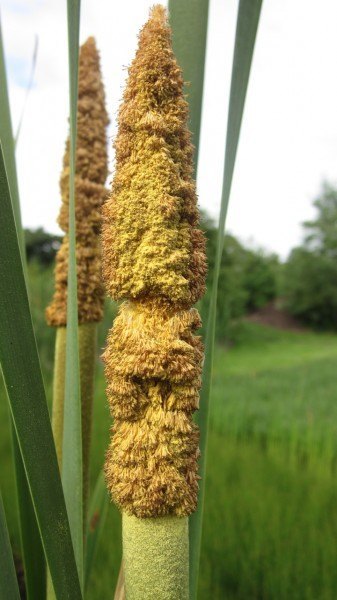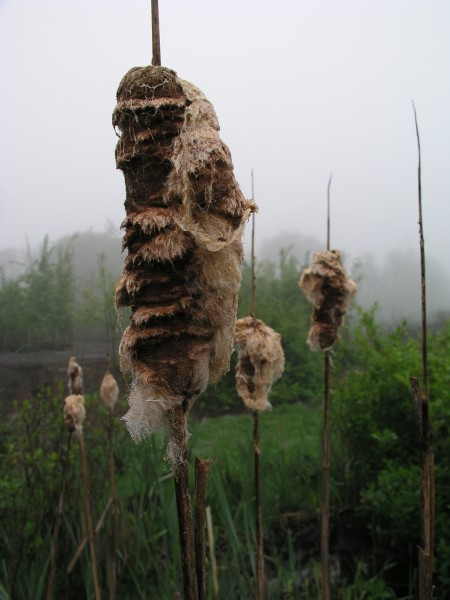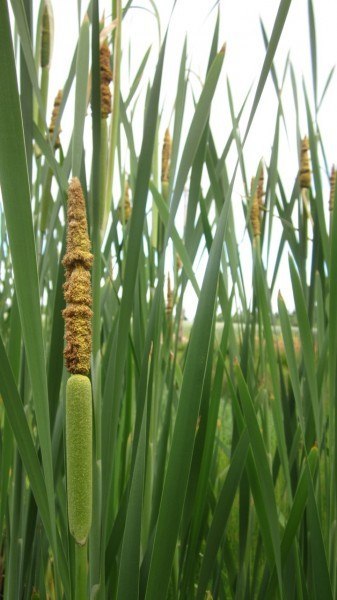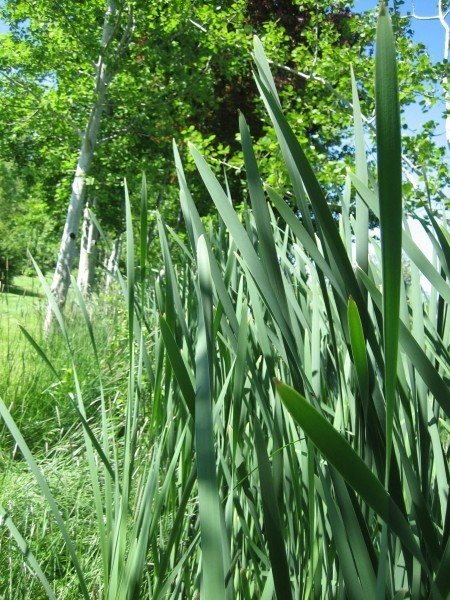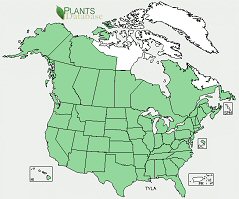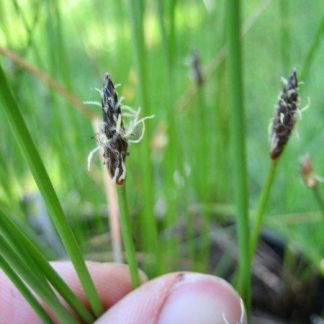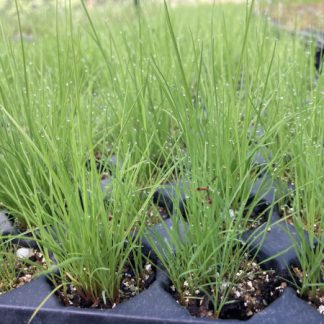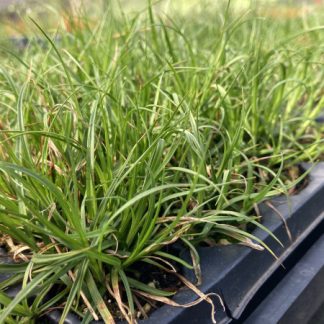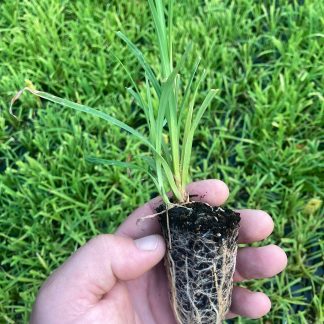Typha latifolia
common cattail
Habit: a tall slender emergent, wetland plant, growing from large starchy rhizomes. The erect stem is stout, unbranched and reed-like. The pale grayish-green basal leaves are thick, flat and 1 in (3 cm) wide growing upright as tall as the flowering stalk. The terminal, cylindrical, inflorescence is arranged in two sections, the uppermost part the staminate (male), and the lower being a large cylindrical green portion composed of many female florets, the green cylinder matures into the familiar velvety brown cattails we are all used to seeing. Flowers mid to late summer.
Ecology: always found in or near water, such as marshes, ponds, wet meadows, and fens throughout North America in low to mid elevations.
Growing Conditions: full sun in wet to standing water where depth never exceeds about 30 in (76 cm). Grows mostly in fresh water but also occurs in slightly brackish marshes, shade intolerant.
Typha latifolia has for centuries been an important plant for indigenous people, being a valuable food source and useful fiber. Keep in mind the fluctuations of water levels when planting.
Specs
Wetland Perennial
3-10 ft (1-3 m)
1-2 ft (30-60 cm)
3

